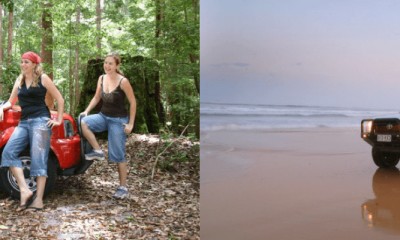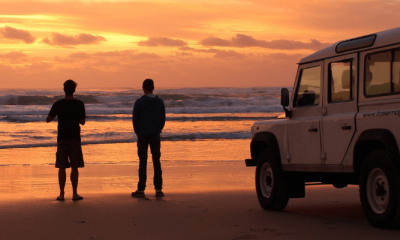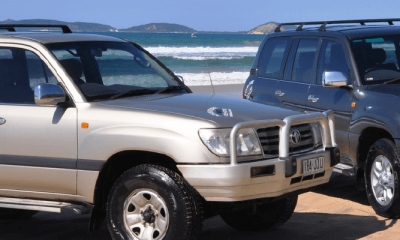4WD on Fraser Island
To ensure you make the most of your four-wheel drive experience on Fraser Island, the following tips may be useful - even for the experienced wheelie.
There is more to driving on Fraser Island than just putting the car in gear and going for it. Regardless of experience, all drivers should note a few ground rules for driving on the island.
Queensland National Parks and Wildlife Service produces a Park Guide to the Fraser Island World Heritage Area with a section on sand driving safety. This is suggested reading before a visit to Fraser Island.
Vehicle access permit
All vehicles traveling to Fraser Island must first have an official permit from the Department of Environment and Heritage offices in Brisbane or on the Fraser Coast (Hervey Bay, Maryborough & Rainbow Beach).

Navigation
There are several good maps available of Fraser Island. Select one with a good scale - such as the Fraser Island edition of the Queensland Sunmap range.
Do your homework before you visit to find out the best places to see. Talk to people who have been to Fraser before or read tourist publications.

Beaches
Even before turning the ignition key, drivers should check tide times. The best time to travel is around low tide. Avoid two hours either side of high tide.
When arriving on the island or before driving on to the beach, check that your wheel locks are in the right position to engage four-wheel drive.
Tyre pressure should be adjusted before driving on the island. Generally, tyres should be 25psi. Some areas on Fraser Island have signs suggesting specific reduced tire pressure to 15 psi to enable driving through soft dry sand.
The beach is a designated road and the normal 'keep to the left' rules apply as well as using indicators for turning. Speed should be kept to below 80kph on the beach and 35kph on the inland roads.
There are stretches of the beach which are used as aircraft landing/take-off strips. Take note of the signs in designated areas and watch for aircraft.
Drivers should beware of the rising tide. Vehicles driven too close to the water can become trapped in wet sand. Drivers of hired vehicles lose their bond immediately if they drive in salt water.
On good beach days, the sand is hard-packed and makes for excellent driving conditions. On bad days, the tides may not have been high enough to wash way the ruts from the previous day's traffic - resulting in build-up of sand banks.
When driving in deep banks of dry sand, keep the car in a low gear, do not change gears, keep the revs high and do not lose momentum.
Rules of the road
General rules about driving under the influence of alcohol or drugs apply. During Christmas and Easter holidays, police patrol the island and administer blood tests.
Drivers should note the numerous gutters that have been created by the creeks flowing into the sea from the island. Even gutters with small banks - if hit at speed - can overturn a vehicle.
Where possible, follow someone else's tracks - choose a set of tracks and stay on them. Do not stop the vehicle in soft sand or in creek beds.
For those who have not driven a four-wheel drive before, the Kingfisher Bay Resort on the island has a 'how-to course' for its house guests.
Finally, if the thought of driving your own four-wheel drive is daunting, there are several excellent tours of the island where you can sit back, relax and let someone else do all the hard work for you.



